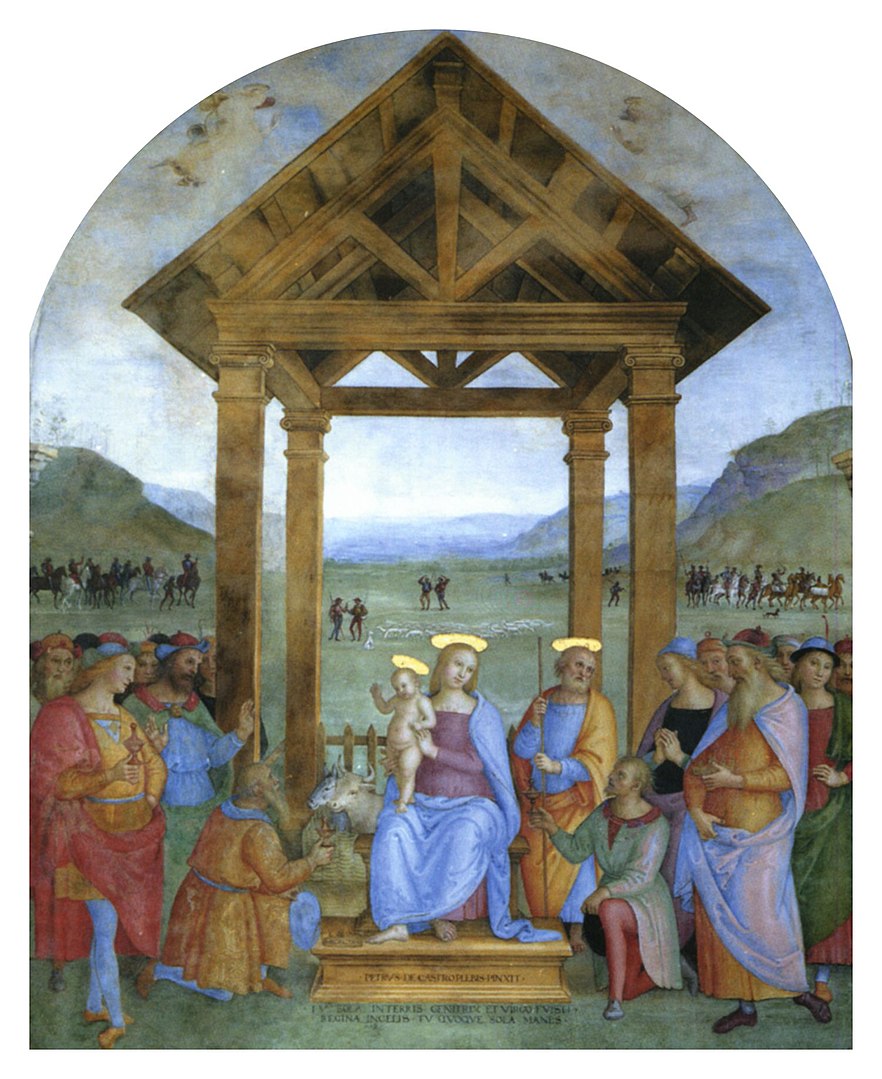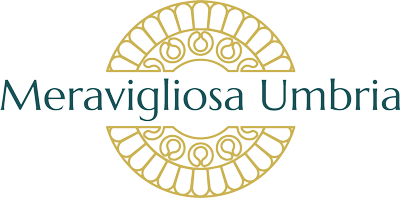Today we want to talk to you about an illustrious painter, Pietro Vannucci called Il Perugino, an Umbrian citizen, who has left us extraordinary works, scattered throughout Umbria, to the point of characterizing a real itinerary on the artist’s trail.
Let’s start from Città delle Pieve, where Perugino was born in 1446. It is a proud city, that from the twelfth century had to undergo the domination of Perugia, interested in excelling in Orvieto and especially on Siena. After a brief period as a free municipality, Perugia took it back in 1250, forcing the Pievesi, defeated, to pave the entire public square of the capital city with their bricks, a typical craft production that even today marks the city’s appearance. The discovery of the city starts from Porta Fiorentina, then you take the wide street dedicated to Pietro Vannucci. A few steps and you reach the oratory of Santa Maria dei Bianchi where one of the most representative works by Perugino, The Adoration of the Magi, a fresco with refined, dreamy and bucolic atmospheres is kept. You will find a more institutional and mature Perugino inside the cathedral of Gervasio and Protasio, in the large table of the third altar on the left, Madonna in glory among the Saints. Nearby there is another of his magnificent works, the Baptism of Jesus. There are numerous treasures of architecture and art, such as the sumptuous Palazzo Della Corgna. Built in the mid-sixteenth century, it shows valuable frescoes with a sacred and profane theme by Pomarancio. However, the Perugino can still be admired in the Church of Santa Maria dei Servi, where the Deposition of the Cross is situated. In Piazza del Plebiscito you can see the birthplace of Perugino.

After visiting the Rocca, you leave Città della Pieve to reach Paciano, located between small vineyards, olives and cultivated fields looking at the woods of Mount Petravella. Paciano is the smallest municipality in Umbria, surrounded by medieval walls. You enter the center through Porta Fiorentina. In the heart of the historic center of the Confraternity of the Blessed Sacrament there is a valuable collection of art. The Perugino left one of its works, the Martyrdom of San Sebastiano, to this precious village with a view of Lake Trasimeno. Among brooms, downy oaks and country churches, you descend to the bottom of the Nestore stream and arrive on the ancient via Pievaiola, a medieval road created by the Perugians in 1296.
From here you reach Piegaro, a town of ancient origins and from this beautiful village, you continue along a secondary road to reach Ponibbiale and then Pratalenza, Casa Martino and Greppolischieto. The appearance is precisely that of the ancient medieval streets. We are on the border with the Orvieto municipality, near the extinct volcano of Peglia and the castle of Montegiove. Passing the prehistoric settlement of the castles of the heirs Fallera, you go towards Castiglion Fosco, a small village dominated by a beautiful cylindrical tower of the fifteenth century.
After Colle Baldo, continue towards Pietrafitta and then you reach the Benedictine abbey of Sette Fratelli. We are very close to Fontignano, the ancient hospice for travelers, where Perugino spent the last two years of his life. The Chiesetta dell’Annunziata, with its linear façade and bell gable, contains the artist’s tomb. Another city where Perugino has left its mark is Deruta: before visiting the capital of ceramics, climb up the hill taking via di Castelleone. From the west, the city is unmistakable, with three towers overlooking it, the Toppo del Vallone and the Cinque Cerque mountains as background. The historical town has remained identical to the detailed depiction of Perugino in his fresco dated 1476 and preserved in the Municipal Art Gallery. Deruta appears at the foot of the Saints Romano and Rocco with the Eternal Father blessing.
From Deruta continue towards north to reach Torgiano. The important castle, founded as a garrison by the municipality of Perugia in the twelfth century, is at the center of a fortunate hill area with lots of vineyards. A land of wine since the age of the Etruscans, Torgiano, inside the castle walls, houses the interesting Wine Museum.
From Torgiano you head towards Bettona, one of the most significant stages in the life of Perugino’s works, and at the Municipal Art Gallery you can admire a Madonna della Misericordia e Santi and a Sant’Antonio da Padova. At this point, we leave Bettona in the direction of Assisi, with the Mount Subasio dominating the Franciscan homeland. Our itinerary can not fail to take into consideration the Basilica of Santa Maria degli Angeli. Here it is only partially preserved a beautiful Crucifixion, a fresco by Perugino dated 1486.
Going up to Assisi, in the Municipal Art Gallery, a few steps from the Basilica of San Francesco, another important painting by Perugino worthily concludes our itinerary to discover the artist, in the wonderful Umbria.
Meravigliosa Umbria offers many bike tours that touch cities where Perugino has left its mark. An example is Fascinating ancient civilizations: Etruscans and Romans which allows you to visit Città della Pieve, Lake Trasimeno, and Assisi



